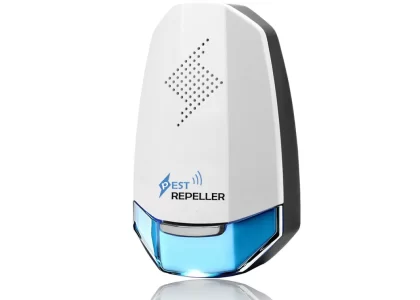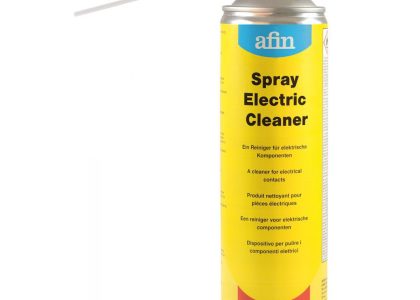 Introduction:
Introduction:
Discovering that your washing machine is leaking from the top can be frustrating and concerning. However, identifying the cause and addressing the issue promptly can prevent further damage and ensure the efficient functioning of your appliance. In this comprehensive guide, we will explore the possible causes of a washing machine leaking from the top and provide practical solutions to resolve the problem. By understanding these causes and implementing the appropriate fixes, you can regain the peace of mind knowing that your washing machine is in good working order.
Introduction to Washing Machine Leaks from the Top
A leaking washing machine can lead to water damage to your floors and surrounding areas if left unaddressed.
A. Identifying the Leak Source: Determining that the leak is coming from the top of the washing machine is the first step in troubleshooting and resolving the issue.
B. Importance of Prompt Action: Addressing the leak immediately can prevent further damage, enhance appliance performance, and avoid potential safety hazards.
 Some possible consequences of this issue:
Some possible consequences of this issue:
Water Damage: Continuous leaking from the top of the washing machine can cause water damage to the surrounding area. This can result in damaged flooring, walls, or nearby furniture. Water damage can be costly to repair and may also lead to mold and mildew growth if not addressed promptly.
Electrical Hazards: If the leaking water reaches electrical components or wiring within the washing machine, there is a risk of electrical hazards such as short circuits or electric shocks. This poses a potential danger to anyone who comes into contact with the water or the machine.
Slip or Fall Accidents: A pool of water on the floor created by a leaking washing machine can create a slip or fall hazard. This is especially concerning if the water reaches a highly trafficked area or if there are children, elderly individuals, or individuals with limited mobility in the vicinity.
Malfunctioning Machine: Continued leaking can lead to corrosion or damage to internal components of the washing machine. This can affect the overall functionality and performance of the machine, potentially resulting in breakdowns or the need for costly repairs.
Wasted Resources: Leaking water from the top of the washing machine also results in the waste of water and energy. This can lead to increased utility bills and harm the environment due to unnecessary resource consumption.
It is crucial to address any leaks from the top of a washing machine promptly to prevent further damage, hazards, or inconveniences. If experienced or knowledgeable in appliance repairs, one can attempt to identify and fix the issue. However, it is advisable to seek professional assistance from an appliance repair technician to ensure proper diagnosis and professional repair, minimizing the risks associated with a leaking washing machine.
 Some common types:
Some common types:
There are several types of washing machines available on the market, each offering different features and functionalities. Here are some common types:
Top-Loading Washing Machines:
Top-loading machines are the traditional style, where laundry is loaded and unloaded from the top of the machine. They are generally more affordable, have a larger capacity, and are easier to load and unload compared to front-loading machines. However, they tend to use more water and energy.
Front-Loading Washing Machines:
Front-loading machines have a door on the front through which laundry is loaded and unloaded. They are known for their energy efficiency, water efficiency, and superior cleaning performance. Front-loaders generally have more advanced features, such as customizable wash cycles, and can accommodate bulky items like comforters. However, they can be more expensive than top-loading machines.
High-Efficiency (HE) Washing Machines:
High-efficiency machines, whether top-loading or front-loading, are designed to use less water and energy compared to traditional washers. They typically have advanced features like quick wash cycles, delayed start options, and steam cleaning capabilities.
Compact Washing Machines:
Compact or portable washing machines are smaller in size and often used in apartments, RVs, or for small loads. These machines can be top-loading or front-loading and are ideal for those with limited space or who need a portable option.
Washer-Dryer Combos:
Washer-dryer combo machines are designed to combine the functions of both a washing machine and a dryer in a single unit. They are space-saving and useful for small living spaces where separate washer and dryer units may not be feasible.
Smart Washing Machines:
Smart washing machines are equipped with internet connectivity and can be controlled and monitored through smartphone apps. They often feature advanced settings, automatic detergent dispensing, and the ability to sync with other smart home devices.
The choice of washing machine type depends on factors such as available space, budget, desired features, energy efficiency, and personal preference. It’s important to consider your specific needs and lifestyle when selecting the right washing machine for your household.
 Causes of a Washing Machine Leaking from the Top
Causes of a Washing Machine Leaking from the Top
Several factors can contribute to a washing machine leaking from the top. Understanding these causes is crucial for effective troubleshooting and repair.
A. Overloading: Overloading the washing machine with an excessive amount of laundry can cause water to overflow and leak from the top.
B. Damaged or Loose Hoses: Cracked, loose, or worn-out hoses connecting to the water inlet or dispenser can result in leaks.
C. Detergent Overuse: Using an excessive amount of detergent can create excessive suds and cause the washing machine to overflow from the top.
D. Clogged Dispenser: Accumulated detergent residue or debris in the dispenser can lead to water overflow and leakage.
Solutions and Fixes
Addressing the cause of the leak in a washing machine requires specific solutions based on the identified problem.
A. Proper Load Size: Follow the manufacturer’s guidelines and avoid overloading the washing machine to prevent water overflow.
B. Check and Secure Hoses: Inspect the hoses connecting to the water inlet and dispenser, ensuring they are tightly and securely attached. Replace any damaged or worn-out hoses.
C. Detergent Measurement: Use the appropriate amount of detergent recommended by the manufacturer to prevent excessive suds and overflow.
D. Clean the Dispenser: Regularly clean the detergent dispenser to remove residue and debris that may be causing clogs and leaks.
Professional Assistance
In some situations, it may be necessary to seek professional help to address the washing machine leak from the top.
A. Persistent Leaks: If the problem persists after attempting the suggested fixes, it may indicate a more significant issue that requires professional evaluation and repair.
B. Plumbing or Structural Issues: A leak from the top of the washing machine can sometimes be a symptom of plumbing or structural problems that need attention from experienced professionals.
Maintaining a Leak-Free Washing Machine
Preventive maintenance can help keep your washing machine in optimal condition and prevent leaks from occurring.
A. Regular Inspections: Conduct periodic inspections of the hoses, dispenser, and other components to identify signs of damage or potential leaks.
B. Cleaning and Maintenance: Follow the manufacturer’s recommendations for cleaning and maintenance, such as descaling and removing buildup to prevent clogs and leaks.
C. Prompt Repairs: Address any issues, such as loose connections or damaged parts, promptly to prevent further damage and potential leaks.
 Conclusion
Conclusion
A washing machine leaking from the top requires proper identification of the cause and effective solutions to address the issue promptly. Overloading, damaged hoses, excessive detergent use, and clogged dispensers can all contribute to leaks. By implementing the appropriate fixes, such as proper load sizing, checking and securing hoses, using the correct amount of detergent, and cleaning the dispenser, you can prevent leaks from occurring. In case of persistent leaks or suspected underlying problems, seeking professional assistance is advisable. Regular maintenance and preventive measures will contribute to a leak-free washing machine and ensure its efficient and reliable performance for years to come.





